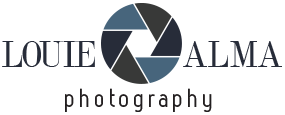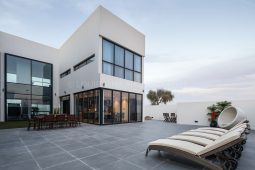The Universe At Our Feet

A small ladybug feasting on pollen from a dandelion. Which way is up? Is the dandelion vertical—or the small plant on which the ladybug is perched? Canon EOS 5D Mark II, Canon MP-E 65mm f/2.8 1-5x Macro Photo. Exposure: 1/200 sec., ƒ/7.1, ISO 100.
The natural world has unending beauty to explore through photography. It’s easy to conjure up images of stunning waterfalls, landscapes and night skies in exotic locations. With an infinite travel budget, you can explore it all. But as near as your backyard, an unexpectedly vast collection of otherworldly subjects is right at your feet. With a few simple techniques and the right equipment, you can begin to discover the enchanted realm of macro photography.
Macro photographers often play by a different rulebook of lines, shapes and colors. Rarely in other genres of photography do you have such flexible control over the fundamental building blocks of an image.
- You are not always beholden to gravity.
- Your perspectives will inherently be unique.
- The closer you get to your subject, the more challenging things become.
- Your shooting choices often have a significant artistic impact on the resulting image.
For example, with no horizon line in the frame, how far can you rotate a composition in any direction before reality feels broken? Twenty degrees? Forty-five? Ninety? I constantly require reminders of macro’s photographic superpower to disregard the precise direction of gravity.

Two dandelion seeds carefully placed to cross each other, sprayed with a mist bottle and a large poppy in the background that refracts through the droplets. Even though many droplets cannot reveal an image of the poppy clearly, they still offer distinctive lines and color contrast. Panasonic LUMIX GH5, Panasonic Leica DG Macro-Elmarit 45mm f/2.8 ASPH OIS. Exposure: 1/250 sec., ƒ/8, ISO 200.
My photograph of dandelion seeds is a perfect example of this. Why not choose to place diagonal lines in the corner of the frame rather than at the bottom? Either way is an acceptable version of reality, such as it is seen within the frame. That “reality,” however, is highly subjective and created for the purposes of the image. Where in nature would you discover perfectly positioned, crossed dandelion seed stems in front of an ornamental poppy in full bloom, at the perfect distances with illumination exclusively on the background flower?
While some macro photography is purely documentary, the genre can also include visual artistry that occurs even before you pick up the camera. Constructing a water droplet refraction scene is a perfect example of this. The “creation” of a subject comes first, followed by the evolution of the photograph. Droplets can either be carefully positioned with a syringe or randomly dispersed with a mist bottle. The more spherical the droplet, the better it will act like a tiny crystal ball. Place something in the background, and it’ll appear within the droplets as a refraction through the tiny water lenses.

Careful placement of flower petals and water droplets with a clear line-of-sight to the gerbera daisy placed in the background allows for refractions to fill each droplet like a crystal ball. Panasonic LUMIX G9, Panasonic Leica DG Macro-Elmarit 45mm f/2.8 ASPH OIS. Exposure: 1/10 sec., ƒ/11, ISO 200.
I understand that such creations might not be respected by purists who prefer to document the world as it is encountered, as it “really is.” There is plenty of natural wonder in the universe at our feet worth documenting, but such documentary work is inherently from a perspective different from our own. How does an ant see the world, looking up at the flowers? “Reality” is in the eye of the beholder, intrinsically subjective, and our cameras allow us to explore these otherworldly narratives.
Looking up at a stand of Shasta daisies can be a humbling experience to photograph as they bend in the wind, intersecting with the sun overhead. As the wind gently and constantly repositions the flowers, we encounter one of the challenges of macro photography: uncontrollable elements. Whether you are chasing a honeybee or trying to find the perfect sparkle of sunlight, you’re likely going to require more images than you think.

Shasta daisies growing up toward the sun. Carefully placing the sun behind a flower head allows for the connection of these two elements without overpowering the flowers. Canon EOS-1D X, Canon EF 24-105mm f/4L IS USM at 40mm. Exposure: 1/640 sec., ƒ/13, ISO 200.
This is not “spray and pray” shooting but rather a hedging of your bets. Taking more images in continuous bursts, from multiple angles and varying focus points is key to overcoming the chaotic variables at play. It’s not uncommon to require over 100 images to land on a photograph in the field where everything connects perfectly—focus, composition and narrative. While you can control water droplets in a studio, the wind under an insect’s wing does not take direction from you.
Apertures For Macro Work
As you continue to explore macro photography, one thing will become obvious: The tiniest details become fascinating. The closer you get, the more there is to see. Increasing your magnification is one of the most frustrating components of macro photography since it also amplifies the challenges you will face.
Unless you are actively seeking an ethereal softness to your images, most macro images are shot with mid-range apertures. The bulk of my work is created at ƒ/8 or smaller, and the reasoning is simple. The closer you are to your subject, the shallower your depth of field becomes. You can compensate by shooting with a smaller aperture to some degree, but the complexities of light will prevent you from getting crisp details if you choose apertures beyond ƒ/16.
This is a gross oversimplification. You can research terms such as “effective aperture” and “diffraction limiting” for a greater understanding of why tiny apertures and high magnification combine to create blurry images, but the overarching point is that macro photographers typically find their “sweet spot” between ƒ/8 and ƒ/16.

A curling tendril from a cucumber vine can be at any angle you chose. Two droplets, one well defined and one adding color to the spiral, were placed with a syringe. Panasonic LUMIX GX9, Laowa 50mm f/2.8 2X Ultra Macro APO (100mm equivalent). Exposure: 1/250 sec., ƒ/8, ISO 200.
Controlling The Light
The greater your magnification, the more important your lighting conditions will become. It’s one thing to use sunlight to frame a butterfly feeding on a flower and quite another to photograph a snowflake on a cold winter night. My first year with a macro lens was filled more with apathy than enthusiasm, mostly due to poor results caused by motion blur and poor subject separation. I had nearly given up on such subjects entirely when I discovered the value of controlling the light.
Imagine a fictional scenario where a camera is entombed in a black room without a single stray photon of light. Even a 10-minute exposure would yield nothing, since there is zero light to capture. In that same scenario, fire a flash during the exposure. How long would the exposure really be—10 minutes, or the duration of the flash firing? Technically both, but the light source is the one we care about. At close range as in macro work, flash power is often decreased, and thereby the “duration” of the flash is lesser. A 1/20,000-sec. flash duration is not uncommon, which is faster than the mechanical shutter speeds of most cameras. Even if the shutter speed of the camera is set to the flash sync speed of roughly 1/200 sec., if there is little ambient light contending with the flash, we’ll mostly experience the image presented by the flash.
Especially when handholding the camera, using flash can offer a major improvement. There are several options to consider, but a ring flash has always been my tool of choice for working quickly in the field. Easy to adjust, either on the end of your lens or positioned off to one side, a ring light provides the diffuse and even lighting that works well for most subjects. Just don’t attempt to use one with water droplets or any spherical subject, or you’ll get an ugly ring-shaped catchlight staring back at you.
With certain subjects, the angle of light is critical. Snowflake imagery is a great example of this. Like glare off a window, the angle of incidence equals the angle of reflection into the camera lens. When photographing on such an angle to capture untold beauty from the surface of a skyborne gem, we also encounter one of the biggest frustrations macro photographers push against: a depth of field so shallow that it cannot be overcome with a single frame.
Focus Stacking For Depth Of Field
The laws of physics don’t bend to our creative pursuits. Depth of field will forever be annoyingly shallow at high magnifications, and snowflakes regularly require magnifications between 3x and 10x magnification to fill the frame. If you can only get a tiny slice of focus in any given image, how do you create a depiction of the subject in focus from tip to tip?

A focus-stacked snowflake using light reflected off the surface of the crystal. This reflected light not only reveals the contours of the crystal surface but also showcases colors created through optical interference via bubbles in the ice. Canon EOS-1D X Mark II, Canon MP-E 65mm f/2.8 1-5x Macro Photo. Exposure: 1/250 sec., ƒ/2.8, ISO 200.
Focus stacking is the answer, a technique that allows you to combine multiple slices of focus together to create a composite image with increased depth. If you have Photoshop, you already can do this. Dedicated software such as Helicon Focus and Zerene Stacker exist, but in my experience, Photoshop is the most forgiving for handheld operations. Explore which options work the best for you; there will be a significant amount of experimenting ahead.
You might think that such activities need to be buttoned down on a focusing rail, calculated with mathematical precision and processed with scientific faultlessness. This is certainly one way. Focus stacking can also be accomplished by hand-holding your camera in the field and slowly moving the entire camera forward and back while continuously shooting to gather as many slices of focus as possible. The data can be sorted through later, and it can be done without complex and intimidating hardware.
The average snowflake photographed using this technique requires about 40 separate images stacked together. What if I need more, or what if I shot the wrong 40 images, and there are gaps? Drastically overshoot to ensure complete coverage. Anywhere from 100 to 300 images of the same crystal might be shot, with the majority of them hitting the digital recycle bin at the end of the day.
Creative Lighting
With so much to explore at home and in every season, it’s no surprise that macro photography has been growing in popularity, and there are even more avenues to explore. One requires little more than a specialized LED flashlight to transform the mundane into the supernatural. What happens when you expose the natural world to unnatural light?
Ultraviolet fluorescence is something we’ve all experienced. “Glow Night” at the bowling alley is a classic example, but you might be surprised by the altered perception of flowers and insects in a dark room with a UV flashlight shining on them.

Ultraviolet fluorescing succulent blossom. These flowers appear completely transformative when they emit light of their own creation. Panasonic LUMIX S1R, Panasonic S 24-105mm f/4 Macro O.I.S. at 105mm. Exposure: 10 sec., ƒ/18, ISO 2500.
You need no special filters, no exotic lenses or camera modifications. What you’re capturing is effectively visible light emitted by your subject itself. When higher-energy ultraviolet light hits the atoms in certain subjects, the electrons in those atoms get excited and rise to a higher orbit for an instantaneously brief period before falling back to their original orbit. The decay releases energy, but some is lost in the movement, and lower-energy light is then emitted in the visible spectrum. We call this “ultraviolet-induced visible fluorescence,” or UVIVF, and to the casual observer, it can look like magic.
Succulents or any flowers in the buttercup family are more likely to showcase an impressive fluorescent response, and there is a significant amount of trial and error involved. Cicadas and some larger dragonflies have wings that will glow a science fiction shade of blue. The trick is to have almost no ambient light and ensure that your flashlight is high quality and doesn’t bleed visible light. Convoy brand lights do well. Don’t forget UV safety glasses if you do not already have prescription eyewear. Even longwave UV light can cause damage over time.
Create Your Own Macro Universes
Filling your frame with a snowflake, constructing a sculpture of water droplets and flowers, or illuminating a view of the natural world that could never normally be seen in nature are all perspectives beyond our own reality but accessible with the aid of our cameras, macro lenses and a dose of imagination.

A green immigrant leaf weevil on a barberry leaf, covered with water droplets that refract the image of a gazania flower in the background. Such things would be impossible to discover in nature without artistic effort. Canon EOS-1D X Mark II, Canon MP-E 65mm f/2.8 1-5x Macro Photo. Exposure: 1/250 sec., ƒ/11, ISO 250.
Reality is subjective. Our cameras “see” the world differently than we do. We can use our imaging tools to explore alternate versions of the world around us—and play an active role in creating new ones. The possibilities are limitless, and there is only so much that can be covered in a single article. If you want to learn more, my book, Macro Photography: The Universe at Our Feet, details every aspect of macro photography. Like Alice in Wonderland, down the rabbit hole we go.
See more of Don Komarechka’s work at www.donkom.ca.
The post The Universe At Our Feet appeared first on Outdoor Photographer.
Advertisement
Subscribe to Our Newsletter
Popular Posts
Pages
- 360 Interactive Virtual Tour Sample
- About the Photographer
- Business Portrait Photography
- Concert Photography
- Event Photography
- Fashion Photography
- Food Photography
- Landscape Photography
- Portrait Photography
- Product Photography
- Real Estate Photography
- Sport Photography
- Still Photography
- Street Photography
- Travel Photography
- Videography







